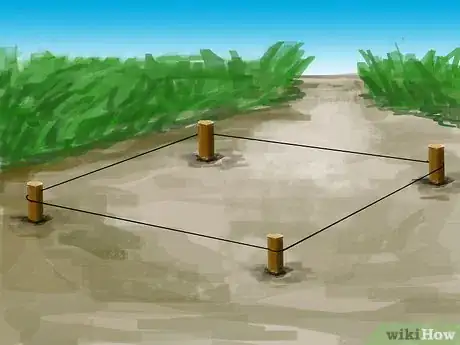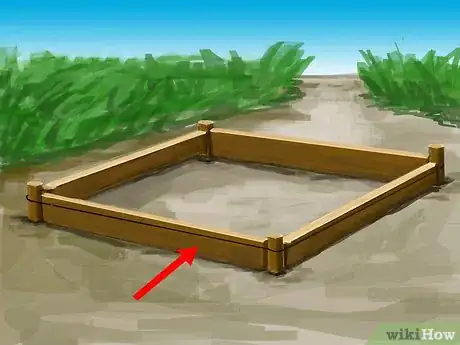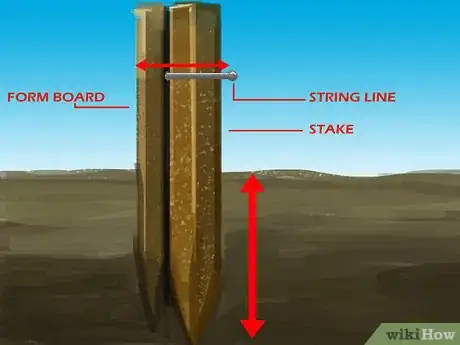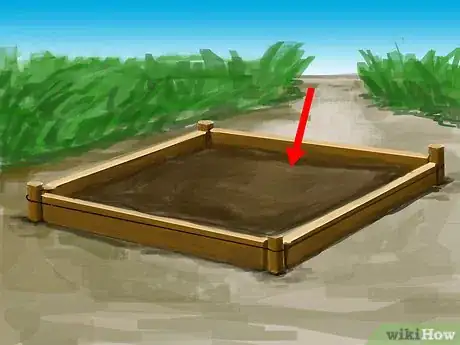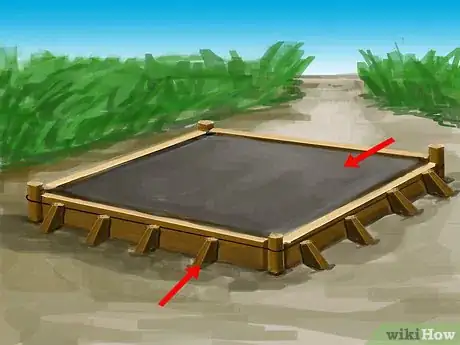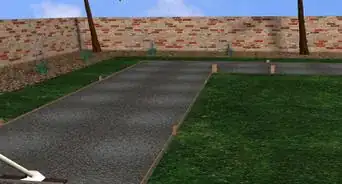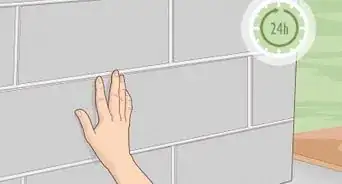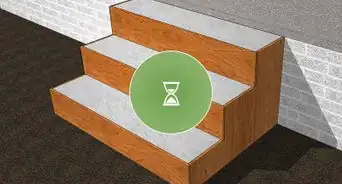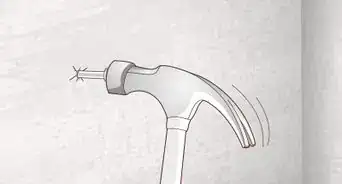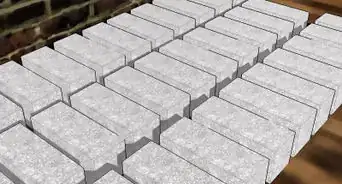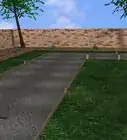X
wikiHow is a “wiki,” similar to Wikipedia, which means that many of our articles are co-written by multiple authors. To create this article, 12 people, some anonymous, worked to edit and improve it over time.
This article has been viewed 310,639 times.
Learn more...
Building a straight form for concrete is fairly simple as long as the correct techniques are used. The depth and width of the concrete placement determine the bracing and forming material required. This article will refer to a slab form, wall forms have completely different requirements.
Steps
-
1Lay out the corner positions of the slab using stakes and string lines. A builder's level is ideal for establishing the grade of the top of concrete,[1] but an inexpensive line level will give decent results on short spans.
-
2Measure diagonally on square and rectangular slabs from corner to corner, shifting parallel sides until the diagonal measurements are equal, while the lengths of the sides remain the desired widths. For simple shapes and small size slabs, this "working line" is sufficient, but for complex shapes and large critical layouts, "batter boards" should be used so that the established building lines will be available to recheck layout as forming progresses.Advertisement
-
3Place the form board starting at one corner alongside the string line, staking it down about 1⁄8 inch (0.3 cm) from the line with sharpened wood stakes. The thickness of the slab will determine the spacing of the stakes, as well as the nominal dimension of the forming lumber. As an example, a 1X4 pine board is usually stiff enough to support a 4 inch (10.2 cm) concrete placement (pour), where an 8 to 12 inch (20.3 to 30.5 cm) slab thickness will require 2 inch (5.1 cm) dimension lumber of a width equal to the height. To insure ease of forming, select straight, flat lumber with minimal knots at the lumberyard.[2]
-
4Stake 4 inch (10.2 cm) slabs a minimum of 32 inches (81.3 cm) on center, and deep enough to firmly support the form, depending on the stability of the soil beneath the form. For thicker slabs, decrease your stake spacing, a 12 inch (30.5 cm) slab will need to be staked no more than 24 inches (61.0 cm) on center. Nail the forms to the stakes level with and almost touching the string line.
-
5Pack the soil around the stakes to lean the form in or out if needed to align it with the string line, and if it is necessary, place a gauge block to hold the string clear of the form and gauge the form at frequent intervals to assure the form is straight.[3]
-
6Drive another row of stakes behind the form 2 to 3 feet (0.6 to 0.9 m) for thicker slabs, and nail a kicker, or 2x4 board from the offset stake to the side of the stake nailed to the form to keep it stable. When placing the concrete, you may want to restring each side to make sure the weight of the concrete hasn't bowed the form, and these stakes can be wedged out to correct any bows.[4]
Advertisement
Community Q&A
-
QuestionAt what size do I need to use batter boards and how do I adjust them for four corner alignment without lessening their stability?
 Community AnswerIt would be better to use metal spikes instead of batter boards. Nail them to the form boards and it will work well.
Community AnswerIt would be better to use metal spikes instead of batter boards. Nail them to the form boards and it will work well.
Advertisement
Warnings
- The only hazards normally encountered in this type of work are splinters,[5] missed blows with the hammer, and nails flying. In the workplace, safety requirements recommend gloves, long pants, boots, and safety glasses in this operation.⧼thumbs_response⧽
Advertisement
References
- ↑ https://www.finehomebuilding.com/2003/09/01/using-a-builders-level
- ↑ https://www.youtube.com/watch?v=yD4xNFDZvcA
- ↑ https://www.constructionprotips.com/jobsite-tips/prep-crack-free-concrete/
- ↑ https://www.familyhandyman.com/masonry/pouring-concrete/concrete-forms-and-pour-a-concrete-slab/
- ↑ https://www.webmd.com/first-aid/splinters-treatment
About This Article
Advertisement
